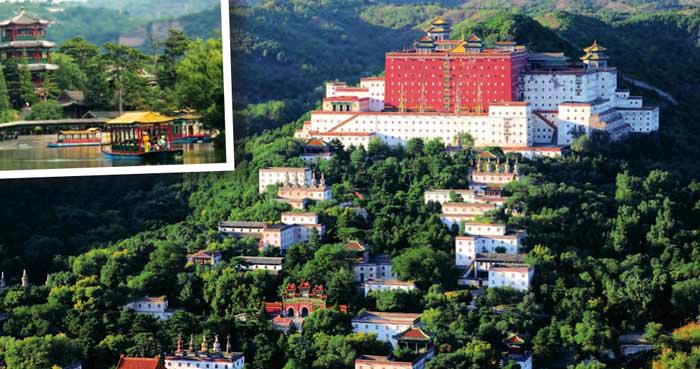Chengde Mountain Resort
Listed as a World Cultural Heritage Site in 1994 Location: Chengde City, Hebei Province, north China Best Time to Visit: Between April and October
The mountain resort of palaces and gardens at Chengde with its outlying temples is the largest existing imperial palace-garden and temple complex in China, covering a total area of 611.2 hectares.
Built between 1703 and 1792, it functioned as the emperors detached summer palace in the Qing Dynasty (1644-1911) near the imperial Mulan hunting ground 350 km from Beijing. The 12 outlying imperial temples, some built in the architectural styles of Chinese ethnic minorities, are distributed across the eastern and northern hills outside the palace and garden area. The man-made landscape of the mountain resort and its outlying temples perfectly integrates with the special natural environment of Chengde.
Every summer and autumn, emperors of the Qing Dynasty including Emperor Kangxi(1654-1722) and Emperor Qianlong (1711-1799) handled military and government affairs of the country and received leaders of ethnic minority groups and diplomatic envoys from foreign countries here, and went north from here to hold the Mulan Autumn Hunting. Important historical events of the Qing Dynasty took place here. The place also witnessed the consolidation and development of China as a unitary multiethnic state.
Chengde Mountain Resort and its outlying temples are classic masterpieces of Chinese palace, gardening art and religious architecture. The landscape of the Mountain Resort is designed following the topography of natural hills and water. As an outstanding example of Chinese natural landscape gardens and palaces, it inherits and carries forward Chinas imperial gardening tradition.
By integrating elements of Han, Mongolian and Tibetan architectural arts and cultures, the outlying temples crystallize the achievements of cultural exchanges and integration among different ethnic groups in the course of the development of Chinese architecture.

